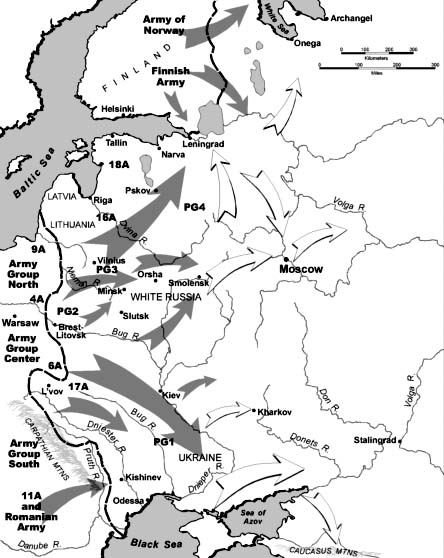World War II: War on the Eastern Front
World War II: War on the Eastern Front
 The Eastern Front of World War II ("Great Patriotic War", or, literally, "Great Fatherland War"); German: die Ostfront 1941-1945, der Russlandfeldzug 1941-1945 (Russian campaign) or der Ostfeldzug 1941-1945 (Eastern Campaign) was a theatre of war between the European Axis powers, Germany, Romania, Hungary, Italy, Slovakia, Croatia and Finland (not an Axis member), and the Soviet Union which encompassed northern, southern and eastern Europe from June 22nd, 1941 to May 9th, 1945.
The Eastern Front of World War II ("Great Patriotic War", or, literally, "Great Fatherland War"); German: die Ostfront 1941-1945, der Russlandfeldzug 1941-1945 (Russian campaign) or der Ostfeldzug 1941-1945 (Eastern Campaign) was a theatre of war between the European Axis powers, Germany, Romania, Hungary, Italy, Slovakia, Croatia and Finland (not an Axis member), and the Soviet Union which encompassed northern, southern and eastern Europe from June 22nd, 1941 to May 9th, 1945.
It was the largest theatre of war in history and was notorious for its unprecedented ferocity, destruction, mass deportations, and immense loss of life. It bore the bulk of the Holocaust as the site of nearly all extermination camps, death marches, ghettos, and most pogroms. Various figures average a total number of 70,000,000 dead because of World War II; with over 30 million dead, many of them civilians, the Eastern Front represents about a half of this total, and has been called a war of extermination. The Eastern Front was arguably the single most decisive component of the World War II, eventually serving as the main reason for Germany's defeat. It resulted in the destruction of the Third Reich, the partition of Germany and the rise of the Soviet Union as a military and industrial superpower.
The two principal belligerent powers were Nazi Germany and the Soviet Union. The Soviet-Finnish Continuation War may be considered the northern flank of the Eastern Front. In addition, the joint German-Finnish operations across the northernmost Finnish-Soviet border and in the Murmansk region are also considered part of the Eastern Front.
|







 The Eastern Front of World War II ("Great Patriotic War", or, literally, "Great Fatherland War"); German: die Ostfront 1941-1945, der Russlandfeldzug 1941-1945 (Russian campaign) or der Ostfeldzug 1941-1945 (Eastern Campaign) was a theatre of war between the European Axis powers, Germany, Romania, Hungary, Italy, Slovakia, Croatia and Finland (not an Axis member), and the Soviet Union which encompassed northern, southern and eastern Europe from June 22nd, 1941 to May 9th, 1945.
The Eastern Front of World War II ("Great Patriotic War", or, literally, "Great Fatherland War"); German: die Ostfront 1941-1945, der Russlandfeldzug 1941-1945 (Russian campaign) or der Ostfeldzug 1941-1945 (Eastern Campaign) was a theatre of war between the European Axis powers, Germany, Romania, Hungary, Italy, Slovakia, Croatia and Finland (not an Axis member), and the Soviet Union which encompassed northern, southern and eastern Europe from June 22nd, 1941 to May 9th, 1945.